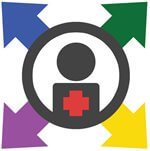Mastering the Decision-Making Process Before Disaster Strikes
Imagine your hospital has lost primary power due to flooding from a rainstorm which has been raging for five days. Water is leaking into your basement where your backup generators and fuel pumps are located. Engineering thinks the hospital can remain operational for an additional twelve hours if the rain stops soon. Unfortunately, weather forecasters… Read more »

Organizing Evacuation Chaos: Coordinating the Movement of Patients
When Hurricane Sandy made landfall in October of 2012, 14 US states and Washington, D.C. were impacted. It was the second-costliest hurricane in US history after Katrina. The storm spanned 1,100 miles, killing at least 233 people along the path of the storm in eight countries. In New York City alone, the storm was the… Read more »

Using Online Learning to Enhance Your Emergency Preparedness Program
Emergency preparedness is a unique entity. It requires hospitals to work with different people, solving different problems and using different resources and strategies than those for routine emergencies. Readiness requires more than simply having an emergency operations plan (EOP). It necessitates ongoing training, a dedicated budget, and experienced leadership to sustain the effort. Hospitals properly… Read more »

DQE Product Release for Public Safety, Industry, First Responders
DQE has released some exciting new products for HazMat responders. New HazMat response tools include our exclusive Decon Utility Stool, Adjustable Dome Clamp, and Non-Sparking Crash Axe. We are also carrying new products from Ansell and Honeywell. DQE is dedicated to bringing responders the best HazMat gear that’s practical and economical.
Managing Hospital Emergency Preparedness without Federal Funding
It has been fourteen years since the September 11 attacks and the subsequent anthrax letters in the fall of 2001. Those tragic events highlighted the vital role of hospitals in our emergency care system. It is the place where victims and first responders are treated during a disaster and where support is provided to them… Read more »

The Cause of High Mortality Rates during 1918 Flu Pandemic May Not Be What You Think.
The Spanish influenza pandemic, which began in 1918, caught the world by surprise. No one knows for sure how many people died from the viral outbreak, but researchers from the 1920s estimated that 21.5 million died as a result of the 1918-1919 pandemic. Others estimate that 500 million people worldwide became infected and the virus… Read more »
Familiarity with the Process of Hospital Evacuation Makes all the Difference
On September 3rd the Royal Perth Hospital in Australia was evacuated after a suspicious package and two firearms were discovered on a treatment floor forcing evacuation of staff and patients from the upper floors of the facility. Also on that day, a chemical spill at Lucy Curci Cancer Center at Eisenhower Medical Center in California… Read more »

Share your Emergency Event Stories: Evacuation due to Fire Extinguisher Discharge
On February 24, 2011 a fire extinguisher hanging on the wall was accidentally bumped and then fell to the floor in an eight-bed critical care unit at IU Health Bloomington Hospital located in southern Indiana. The impact from hitting the floor bent the handle and pin causing the Multi-Purpose Dry Chemical Fire Extinguisher to spontaneously discharge… Read more »

